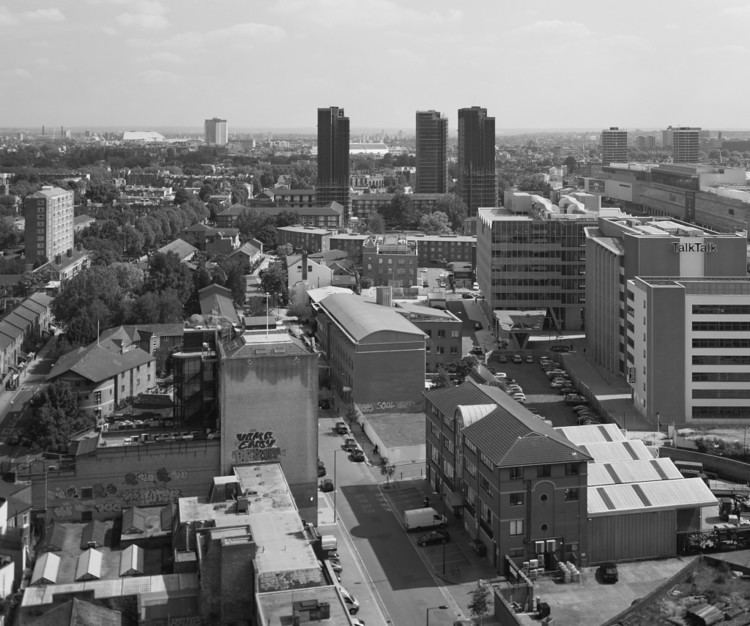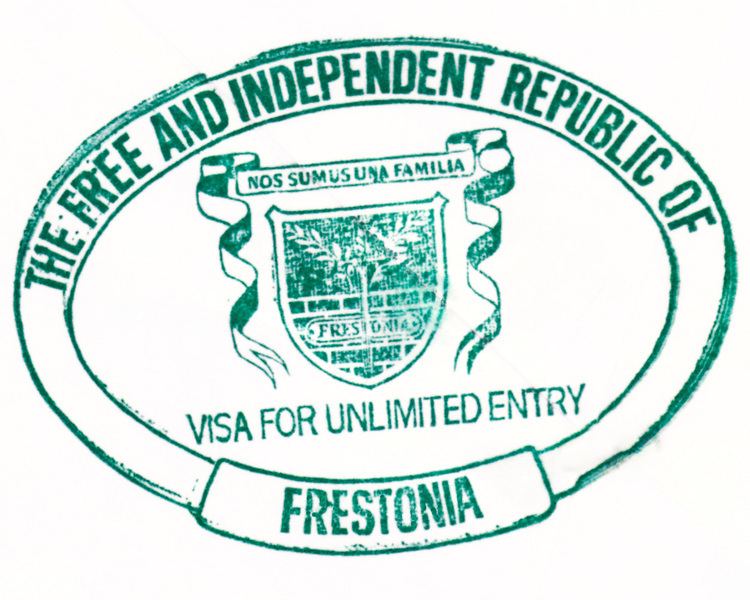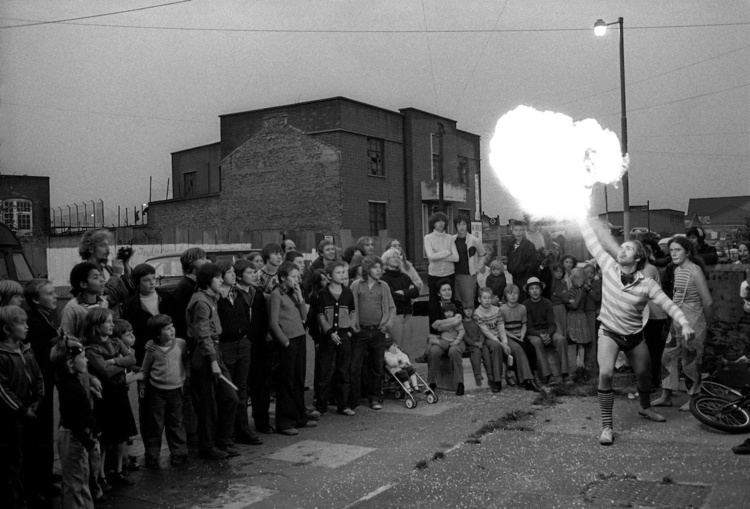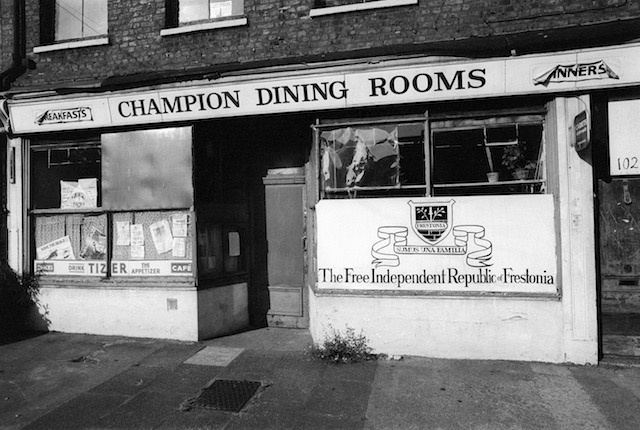 | ||
Beautifulgirl aztec camera
Frestonia was the name adopted by the residents of Freston Road, London, when they attempted to secede from the United Kingdom in 1977. The residents were squatters, many of whom eventually set up a housing co-op in negotiation with Notting Hill Housing Trust, and included artists, musicians, writers, actors and activists. Actor David Rappaport was the Foreign Minister, while playwright Heathcote Williams served as Ambassador to Great Britain.
Contents
- Beautifulgirl aztec camera
- The republic of frestonia
- Location
- Origins
- Independence
- Culture communications transport and economy
- Decline and fall
- Current situation
- Cultural reactions
- References

The republic of frestonia
Location

Frestonia consisted of a 1.8 acres (7,300 m2) triangle of land (including communal gardens) formed by Freston Road, Bramley Road and Shalfleet Drive, W10, which belonged at the time to the London Borough of Hammersmith. This land crosses the boundary of London postal districts W10 (North Kensington) and W11 (Notting Hill), and now belongs to the Royal Borough of Kensington and Chelsea.
Origins

Most of the residents of Freston Road were squatters, who moved into empty houses in the early 1970s. When the Greater London Council planned to redevelop the area, the 120 residents first all adopted the same surname of Bramley with the aim that the council would then have to re-house them collectively.
Independence

The Council threatened formal eviction, so at a public meeting attended by 200 people, resident Nicholas Albery - inspired by both the Ealing comedy film Passport to Pimlico and a previous visit to Freetown Christiania in Copenhagen - suggested that they declare the street independent of the rest of the UK. A referendum returned 94% of residents in favour of the plan, and 73% in favour of joining the European Economic Community. Independence was declared on 31 October 1977. Shadow Chancellor of the Exchequer Sir Geoffrey Howe wrote expressing his support, saying "As one who had childhood enthusiasm for Napoleon of Notting Hill, I can hardly fail to be moved by your aspirations". In a legal dispute regarding the unauthorised performance of his play The Immortalist, Heathcote Williams won a ruling from the UK courts that Frestonia was for this purpose not part of the UK.
The state adopted the Latin motto Nos Sumus Una Familia - We are All One Family - and applied to join the United Nations, at the same time warning that peacekeeping troops might be needed to keep the GLC at bay.
Culture, communications, transport and economy
Frestonia had its own newspaper The Tribal Messenger.
It also had an art gallery, The Car Breaker Gallery, from which came the performance art of Mutoid Waste Company, visual artist Julie Umerle, comic book artist Brett Ewins, multimedia artist Giles Leaman and graphic novelist Brendan McCarthy. The Car Breaker Art Gallery opened to the public at 4 Bramley Road on 14 December 1979. In 1980, the conceptual artist John Latham was a member of the audience at the private view of one of the performances presented there. Professional lighting for the gallery was donated by Sandy Nairne, later to be Director of the National Portrait Gallery.
Frestonia street art included a whale on Stoneleigh Street and a performance of Apocalypse Now on bicycles.
In addition, there was a "National Theatre" at Frestonia which performed Heathcote Williams's The Immortalist. The Frestonian National Film Institute was also formed; its first screening being - appropriately - Passport to Pimlico and a film of The Sex Pistols.
Local transport was served by the Number 295 bus, and the London Underground, Latimer Road tube station being at the north end of Bramley Road. There were Frestonian postage stamps (honoured by the General Post Office), as well as plans to introduce a currency.
When the state celebrated its fifth anniversary in 1982, the population numbered 97 people occupying 23 houses. The same year, The Clash recorded their album Combat Rock in Ear Studios (also known as The People's Hall) in Frestonia. The Clash and Motörhead practised in the rehearsal studios there.
Decline and fall
Following international press coverage, the residents formed the Bramleys Housing Co-operative Ltd, which negotiated with Notting Hill Housing Trust for continued residence and acceptable redevelopment of the site. Some Frestonians were unhappy with the consequent loss of independence, and moved away. According to Tony Sleep, a brief Frestonian onlooker whose online photo-journal documents his idea of the history of the area, those leaving were often replaced by people with drinking and drug problems. The remaining Frestonians grabbed what they could for themselves instead of maintaining the ideals of the Frestonian "nation" which consequently went into decline. In its place, a more conventional local community reinstated the usual hierarchies.
Current situation
Bramleys Housing Co-operative manages the properties owned and built on the Frestonia site by Notting Hill Housing Trust, and its members live as a close-knit community. Some are children or grandchildren of the original Frestonians, although there has also been a significant influx of new residents.
A large new office development, also named Frestonia, was built on the adjacent site at the junction of Bramley Road and St Anns Road, and is occupied by the headquarters of Cath Kidston. A second large office development also named Frestonia by its developers was erected at 125/135 Freston Road in 2001. The Louise T Blouin Foundation is located in nearby Olaf Street, off Freston Road.
Major developments occurred in the 2000s with the completion of environmentally-friendly headquarters buildings for Monsoon Accessorize (in 2007) and TalkTalk (in 2009) at the rear of 91-121 Freston Road. The 150,000m² Westfield London shopping complex was also finished around this time, and links Frestonia, including the two HQ buildings in Notting Dale, via a nearby footbridge over the West Cross Route.
